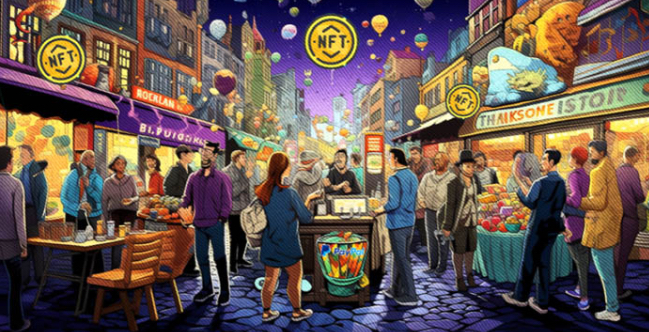When you hear “NFT Marketplace”, OpenSea is typically what comes to mind, or Rarible perhaps.
But while the ascent of non-fungible tokens (NFTs) was initially celebrated as an innovative frontier within the cryptocurrency industry, the current landscape paints a more subdued picture, with the market experiencing a bearish trend.
In the wake of this shift, numerous NFT projects are grappling with the challenge of attracting buyers in light of a less optimistic outlook on future values.
An analysis by dappGambl, encompassing over 73,000 NFT collections, reveals a narrative that diverges significantly from the tales of million-dollar transactions and instant success.
Notably, a mere 21% of the scrutinized NFT collections have achieved full ownership or boasted over 100% ownership, leaving a substantial 79% unsold.
This stark disparity between the proliferation of new NFTs and the actual demand underscores a critical issue of oversupply, effectively shaping a buyer’s market.
It seems like in this ever-evolving landscape, investors are increasingly adopting a discerning approach, carefully evaluating the uniqueness, potential value, and underlying narrative of NFT projects before committing to their resources.
The report pointed out that:
“Almost 4 out of every 5–have [NFTs] remained unsold. This situation is telling of a significant imbalance between the creation of new Non Fungible Tokens (NFTs) and the actual demand for these digital assets.”
However, I feel that despite NFTs not performing as well as they did, companies are still jumping on the bandwagon.
The most recent example is PayPal.
As evidenced by their recent patent application, unveiled on 21 September, PayPal made its stride into the realm of NFTs.
What Is So Distinctive About PayPal’s NFT Marketplace?
This patent introduces a distinctive framework where NFT transactions may be routed through an undisclosed third-party service provider, with Ethereum mentioned as a reference in the application.
The proposed PayPal ecosystem is marked by its adaptability, offering intriguing possibilities such as fractionalised NFT purchases.
This could potentially lead to the circulation of governance tokens available for trade.
Additionally, the application hints at the utilization of a decentralized autonomous organization (DAO) affiliated with the service provider, aiming to bolster NFT liquidity on a dedicated platform.
The patent’s scope extends beyond digital collectibles; it encompasses anything representing distinct digital data that can be traced through a decentralized blockchain ledger.
Illustrated diagrams within the application shed light on another intriguing feature — an “omnibus wallet” directly linked to the service provider.
Transactions of this nature would not be recorded on the blockchain, eliminating associated gas fees.
PayPal’s vision also explores the concept of generating income from NFTs through royalties.
To enhance user convenience, third-party entities could offer storage and checkout services, while the service provider could streamline compliance and risk management.
Notably, the system’s versatility is underscored by its capacity to accommodate various currencies.
Although an official release date for PayPal’s NFT marketplace remains undisclosed, their aim is to create an environment where investors, creators, and users can flourish both on and off the blockchain.
This endeavor follows PayPal’s recent introduction of their dollar-backed stablecoin, PayPal USD ($PYUSD), a pioneering move by a major United States (US) financial institution in the digital asset arena.

